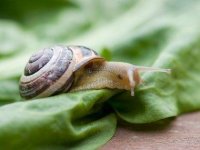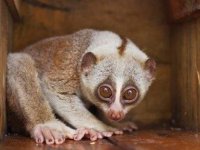J
Jeanh
Guest

Ladybugs are cannibals
These brightly colored beetles aren't afraid to turn on each other when food is scarce. If it's a matter of survival, ãdül† ladybugs will eat other freshly molted or newborn ladybugs. The beetles also have a wicked defense mechanism: When startled, ladybugs emit a foul-smelling fluid from their leg joints that helps scare away predators.

Starfish have ghoulish eating habits
It may come as little surprise that these unusual creatures have a few biological eccentricities—they see through tiny "eyespots" at the tip of each arm, for example. But their eating habits qualify as downright grotesque. To consume a mussel or clam, the five-pointed critter pries the shell open slightly, ejects its stomach from its mouth into the shell, digests the animal, then slides its stomach back into its own body.

Snails have razor-sharp teeth
How terrifying can an animal really be if it moves at an average speed of 0.03 mph and leaves behind a trail of goo? One look into a snail's mouth will tell you: Gastropods, including snails and slugs, have thousands of tiny teeth located on ribbon-like structure called a radula. Depending on the species, they use these teeth as a poison harpoon, to cut prey, or, in the case of the ghost slug, to seize and devour earthworms.

Slow loris monkeys have poisonous elbows
The doe-eyed slow loris is a popular exotic pet, but these little fur balls are one of the only poisonous mammals in the world. Normally no more than 15 inches long, slow lorises produce a toxic secretion from the brachial gland in the upper arm that can cause a severe allergic reaction in other mammals. When threatened, the creatures lick the secretion and bite the predator, delivering the poison into the wound.

Polar bears are vicious predators
Polar bears may look cute and cuddly, but they are the world's largest land predator, often stalking the breathing holes seals make in the ice. Using their excellent sense of smell, polar bears wait until they detect the seal's breath, then reach into the hole and drag the seal out onto the ice. Male polar bears have been known to attack and kill prey twice their size, including walruses, beluga whales, and narwhals
Attachments
-
You do not have permission to view the full content of this post. Log in or register now.